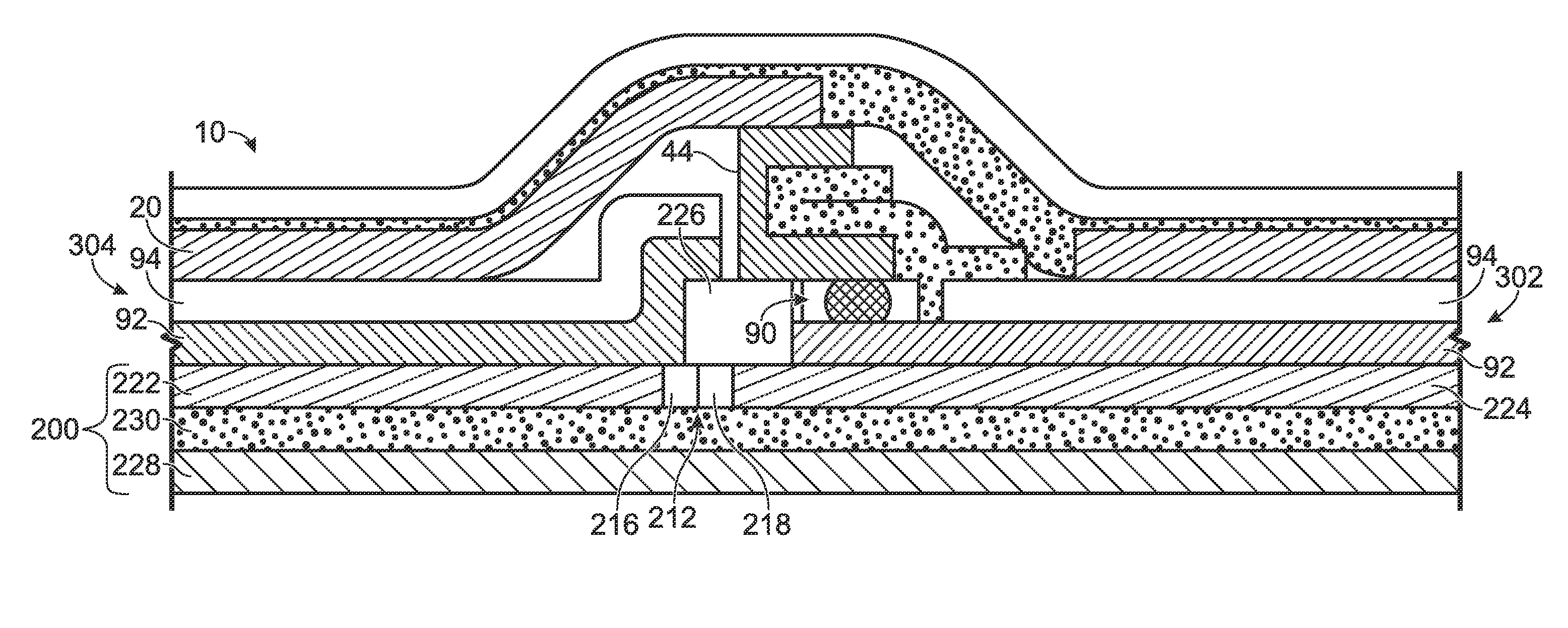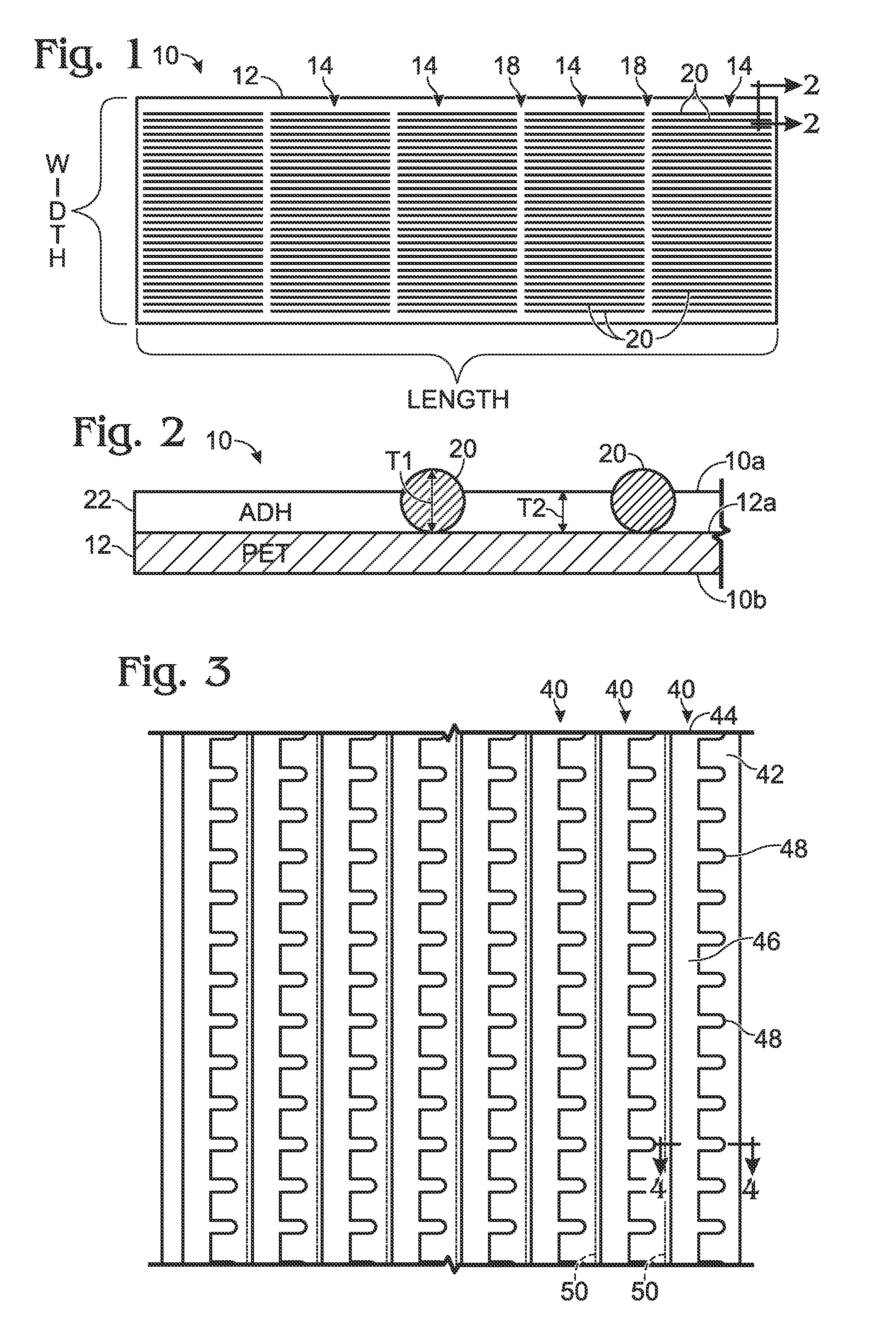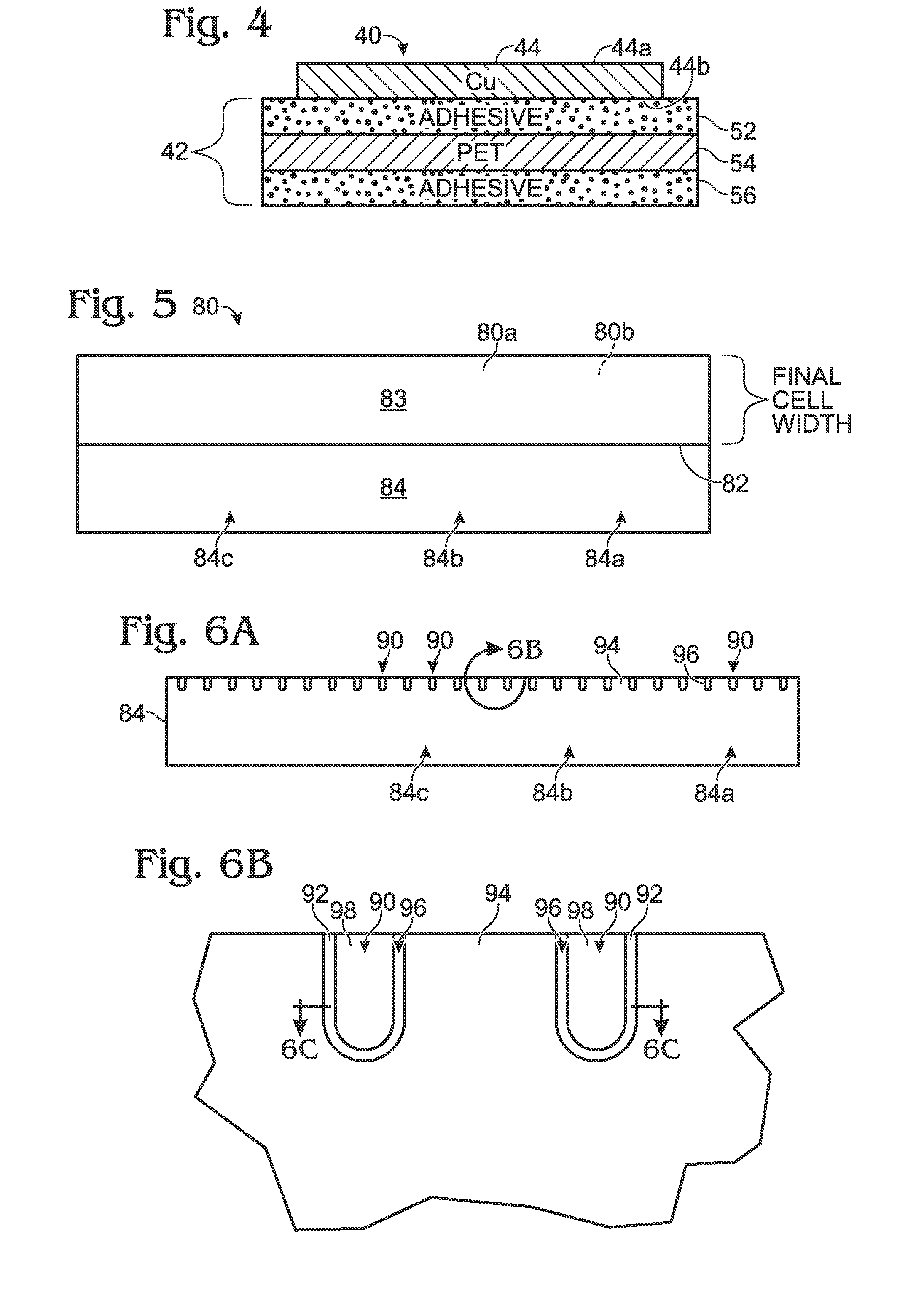Photovoltaic interconnect systems, devices, and methods
a photovoltaic interconnection and photovoltaic technology, applied in the field of photovoltaics, can solve the problems of small electrical imbalance inside the solar cell, overall charge imbalance in the cell, and single conventional solar cell not enough to power most applications
- Summary
- Abstract
- Description
- Claims
- Application Information
AI Technical Summary
Benefits of technology
Problems solved by technology
Method used
Image
Examples
Embodiment Construction
[0050]Systems, devices and methods for interconnecting flexible, thin-film photovoltaic (PV) cells are provided. According to the present teachings, systems and methods of interconnecting thin-film photovoltaic cells may include a series of photovoltaic cells and a transparent top or front sheet covering the cells. Electrically-conductive pathways are established connecting a top or “sunny” side of one cell to the top of the conductive substrate underlying the photoactive material of an adjacent cell. Portions of the photoactive material of the interconnected cells may be scribed away or otherwise removed, to expose the underlying conductive substrate and to facilitate interconnection. The top sheet may include copper wires embedded in a transparent adhesive and configured to form electrical connections between adjacent cells that are placed in contact with the grid.
[0051]FIGS. 1 and 2 depict a substantially optically transparent or transmissive top sheet (or front sheet), generally...
PUM
 Login to View More
Login to View More Abstract
Description
Claims
Application Information
 Login to View More
Login to View More - R&D
- Intellectual Property
- Life Sciences
- Materials
- Tech Scout
- Unparalleled Data Quality
- Higher Quality Content
- 60% Fewer Hallucinations
Browse by: Latest US Patents, China's latest patents, Technical Efficacy Thesaurus, Application Domain, Technology Topic, Popular Technical Reports.
© 2025 PatSnap. All rights reserved.Legal|Privacy policy|Modern Slavery Act Transparency Statement|Sitemap|About US| Contact US: help@patsnap.com



